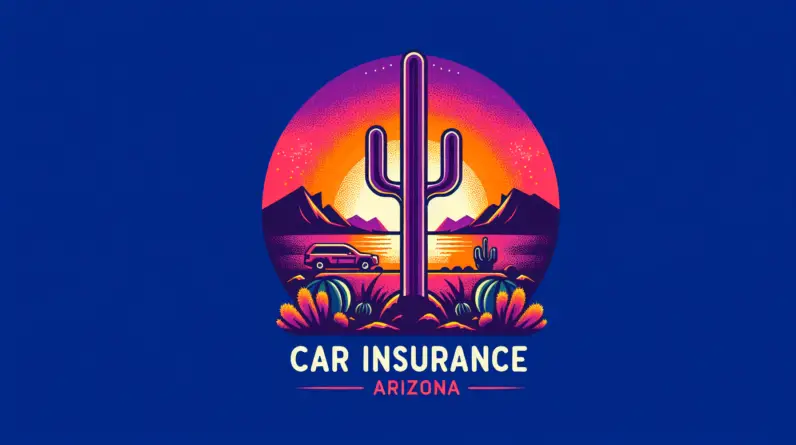
Car Insurance for 18 Year Olds – Learn how to obtain the right coverage as a young driver. Factors affecting rates, tips for finding affordable insurance, coverage options, and more.
Congratulations! You’ve finally reached the age of 18 and are ready to embark on exciting new adventures. But before you hit the road with unlimited freedom, there’s one thing you can’t overlook – car insurance for 18-year-olds. We understand that the world of insurance can be overwhelming and confusing, especially for young drivers like yourself. That’s why we’re here to guide you through the ins and outs of obtaining the right coverage, ensuring your peace of mind as you embrace the thrill of the open road. Trust us, it’s easier than you think!

Factors Affecting Car Insurance Rates for 18 Year Olds
Driving Experience
When it comes to determining car insurance rates for 18 year olds, one of the key factors is their driving experience. Insurance companies typically consider younger drivers to be higher-risk, as they may not have had enough time behind the wheel to develop good driving habits and judgment. For this reason, 18 year olds with little to no driving experience can expect to pay higher insurance premiums compared to more experienced drivers.
Type of Car
The type of car an 18 year old chooses to drive also plays a significant role in determining their insurance rates. Generally, sports cars or high-performance vehicles are associated with a higher risk of accidents due to their speed capabilities. Insurance companies are well aware of this and therefore charge higher premiums for these types of cars. So, if you’re an 18 year old looking for affordable car insurance, opting for a safe and reliable vehicle rather than a flashy sports car may help lower your rates.
Location
Where an 18 year old lives can affect their car insurance rates as well. Insurance companies take into consideration the population density and crime rate of a specific area when determining rates. If an 18 year old lives in an urban area with heavy traffic or a high rate of car thefts, they may face higher insurance premiums compared to someone living in a rural or suburban area. So, remember that your location can have a significant impact on the cost of your car insurance.
Insurance History
Your insurance history is another factor that can affect your car insurance rates as an 18 year old. If you have been insured under your parents’ policy for a few years, it shows that you have some experience with car insurance and have maintained a good driving record. On the other hand, if you’re a newly licensed driver with no prior insurance history, you may be considered higher risk and face higher premiums. As you gain more experience and maintain a clean driving record, your rates are likely to decrease over time.
Gender
While it may seem unfair, gender can also play a role in determining car insurance rates for 18 year olds. Historically, statistics have shown that young male drivers are more likely to be involved in accidents compared to young female drivers. For this reason, insurance companies may charge higher premiums for male drivers at this age. However, it’s important to note that not all insurance companies follow this practice, and rates may vary depending on the insurer. Make sure to compare quotes from different providers to find the best rates for your specific situation.
Tips for Finding Affordable Car Insurance for 18 Year Olds
Shop Around
One of the most important tips for finding affordable car insurance as an 18 year old is to shop around and compare quotes from different insurance providers. Insurance rates can vary significantly from one company to another, so taking the time to gather multiple quotes will help you identify the best options for your budget. Online comparison tools can be a valuable resource in making this process easier and more efficient.
Consider Different Coverage Options
When looking for affordable car insurance, it’s important to consider the different coverage options available to you. While it may be tempting to opt for the minimum required coverage to save money, it’s essential to ensure you have adequate protection in case of an accident. Liability coverage is typically the minimum required by law, but collision coverage, comprehensive coverage, and personal injury protection are worth considering for added peace of mind.
Take Advantage of Discounts
As an 18 year old, you may be eligible for various discounts that can help lower your car insurance premiums. Many insurance companies offer discounts for good grades, completion of defensive driving courses, and even for maintaining a clean driving record. Additionally, some insurers offer discounts for bundling multiple insurance policies together. Make sure to inquire about the available discounts when obtaining quotes to potentially save you money on your car insurance.
Improve Driving Record
Maintaining a clean driving record is crucial not only for your safety, but also for keeping car insurance rates low. Avoiding accidents and traffic violations will help demonstrate to insurance companies that you are a responsible driver and can potentially help reduce your premiums over time. By practicing safe driving habits and following traffic laws, you can keep your record clear and ensure that you’re not paying more than necessary for your car insurance.
Maintain a Good Credit Score
Believe it or not, your credit score can also impact your car insurance rates as an 18 year old. Insurance companies often use credit-based insurance scores as a factor in determining rates, as studies have shown a correlation between lower credit scores and a higher likelihood of filing insurance claims. To ensure you receive the most affordable car insurance rates, it’s important to establish good credit habits and maintain a solid credit score.
Coverage Options for Car Insurance
Liability Coverage
Liability coverage is the minimum required by law in most states. This coverage helps cover costs associated with injury or property damage that you may cause to others in an accident. It typically includes bodily injury liability, which covers medical expenses, and property damage liability, which covers repairs or replacement costs for damaged property.
Collision Coverage
Collision coverage helps cover the costs of repairing or replacing your own vehicle if it is damaged in a collision, regardless of who was at fault. This coverage is especially important for new or expensive vehicles, as the repair or replacement costs can be substantial.
Comprehensive Coverage
Comprehensive coverage protects against damages to your vehicle that occur due to incidents other than collisions. This can include theft, vandalism, fire, natural disasters, and falling objects. If you want to have coverage for a broad range of potential risks, comprehensive coverage is worth considering.
Personal Injury Protection
Personal injury protection, also known as PIP, helps cover medical expenses and lost wages for you and your passengers if you’re injured in an accident. This coverage is particularly helpful in no-fault states where each party’s insurance pays for their medical expenses regardless of fault.

Understanding Car Insurance Terms
Premium
The premium is the amount you pay to your insurance company for the coverage provided by your car insurance policy. It is typically paid on a monthly or annual basis. The premium amount is determined by several factors, including your age, driving record, the type of car insured, and the coverage options you select.
Deductible
A deductible is the amount you agree to pay out of pocket before your insurance coverage kicks in. For example, if you have a $500 deductible and you are involved in an accident that causes $2,000 in damages to your vehicle, you would need to pay the first $500, and your insurance company would cover the remaining $1,500. Generally, choosing a higher deductible can help lower your insurance premiums, but it also means you’ll have a larger out-of-pocket expense if you need to file a claim.
Policy Limits
Policy limits refer to the maximum amount an insurance company will pay for a covered loss or claim. For example, if you have a policy limit of $50,000 for bodily injury liability and you cause an accident resulting in $75,000 in medical expenses, you would be responsible for paying the remaining $25,000. It’s important to carefully consider your policy limits to ensure they adequately protect you in case of an accident.
Claim
A claim is a formal request you make to your insurance company to receive compensation for a covered loss or damages. If you are involved in an accident or experience any other covered incident, you will need to submit a claim to your insurance company with all the necessary details and documentation. The insurance company will then assess the claim and provide compensation based on the terms of your policy.
Steps to Take After an Accident
Ensure Safety
The first and most important step after an accident is to ensure your safety and the safety of others involved. If possible, move your vehicle out of traffic and turn on your hazard lights to alert other drivers. Check yourself and your passengers for injuries and call for emergency medical assistance if needed.
Exchange Information
Exchange information with the other parties involved in the accident. This includes obtaining their names, contact information, driver’s license numbers, and insurance policy details. It’s also helpful to gather contact information from any witnesses who may have seen the accident.
Contact Authorities
In most cases, it’s important to contact the authorities after an accident. If there are any injuries, it’s crucial to call the police and file a report. Even if there are no apparent injuries, it’s still a good idea to contact the police to ensure documentation of the accident.
Notify Insurance Company
Contact your insurance company as soon as possible to report the accident and initiate the claims process. They will guide you through the necessary steps and requirements for filing a claim. Provide them with a detailed account of the accident, any photos or evidence you may have, and the contact information of the other parties involved.
Document the Accident
Documenting the accident is essential for the claims process. Take photos of the damage to your vehicle, the accident scene, and any visible injuries. Write down any important details, such as the date, time, and location of the accident, weather conditions, and a description of what happened. This documentation will help support your claim and ensure a smoother process.
Consequences of Driving Without Insurance
Penalties and Fines
Driving without car insurance is illegal in most states, and the consequences can be severe. If caught driving without insurance, you may face penalties and fines imposed by law enforcement. These penalties can vary depending on the state, but they often include hefty fines, license suspension, and the requirement to obtain an SR-22 certificate of financial responsibility.
License Suspension
Driving without insurance can lead to a suspension of your driver’s license. This means you will be legally unable to operate a motor vehicle for a specified period. License suspensions can significantly impact your daily life, making it difficult to commute to work or school, and they can also result in higher insurance rates once you are able to reinstate your license.
Financial Responsibility
If you cause an accident while driving without insurance, you will be personally responsible for all damages and injuries incurred by the other party involved. This can easily add up to thousands or even millions of dollars. Without insurance, you may be forced to pay these expenses out of pocket, potentially leading to financial hardship or bankruptcy.
Legal Consequences
Driving without insurance is not only a legal offense, but it can also have serious legal consequences. If you are involved in an accident while uninsured, you may face legal action from the injured party seeking compensation for their damages. Additionally, repeated offenses of driving without insurance can result in more severe penalties, such as higher fines, longer license suspensions, or even imprisonment in certain cases.
Ensuring Adequate Protection with Car Insurance
Determining Coverage Needs
To ensure you have adequate protection with car insurance, it’s important to assess your coverage needs. Consider factors such as the value of your vehicle, your financial situation, and any specific risks you may face. While it may be tempting to opt for the minimum required coverage, it’s essential to consider the potential consequences of being underinsured in the event of an accident.
Considering Other Drivers in the Household
If you live with other drivers in your household, it’s crucial to consider their insurance needs as well. Adding them to your policy or exploring the option of a multi-driver policy can often lead to discounts and more efficient coverage. However, keep in mind that adding high-risk drivers may also increase your premiums.
Umbrella Insurance
Umbrella insurance is an additional coverage option that provides liability protection beyond the limits of your standard car insurance policy. This type of insurance can be especially beneficial for 18 year olds, as it offers an extra layer of financial protection in case of a severe accident or lawsuit.
Additional Coverage Options
Depending on your circumstances, there may be additional coverage options worth considering. These can include roadside assistance, rental car reimbursement, and gap insurance. Roadside assistance can provide peace of mind by offering services like towing, fuel delivery, and lockout assistance. Rental car reimbursement helps cover the cost of a rental car if your vehicle is undergoing repairs due to a covered claim. Gap insurance is particularly useful if you owe more on your car loan than the actual value of your vehicle, as it covers the difference in case of a total loss.
The Role of Parents in Car Insurance for 18 Year Olds
Adding an 18 Year Old to an Existing Policy
Parents can play a significant role in helping their 18 year olds find affordable car insurance. One option is to add the 18 year old to the parents’ existing car insurance policy. This is often a more cost-effective solution compared to the young driver getting their own policy, as the parents’ existing policy may already have favorable rates and discounts.
Monitoring Driving Habits
Parents can also play a role in helping their 18 year olds maintain safe driving habits. By regularly discussing the importance of responsible driving and monitoring their driving behavior, parents can help instill good habits from the start. Monitoring can include setting boundaries for driving privileges, limiting distractions in the car, and ensuring compliance with traffic laws.
Financial Responsibility
Parents can also emphasize the importance of financial responsibility to their 18 year olds. By educating them about the potential consequences of driving without insurance or being involved in an accident, parents can help their young drivers understand the financial implications of their actions. This can motivate responsible behavior and encourage their 18 year olds to protect themselves with proper car insurance coverage.
Stress the Importance of Safe Driving
Parents should stress the importance of safe driving to their 18 year olds. Reinforcing the significance of following traffic laws, avoiding distractions, and practicing defensive driving techniques can help reduce the risk of accidents. By emphasizing safe driving, parents can help their young drivers maintain a clean driving record, which can lead to lower insurance rates in the future.
How to Lower Car Insurance Rates for 18 Year Olds
Maintain Good Grades
Many insurance companies offer discounts for students who maintain good grades. Encouraging your 18 year old to focus on their studies can not only benefit their education but also help lower their car insurance rates. Make sure to inquire with your insurance company about any available discounts for good grades.
Enroll in Defensive Driving Courses
Another effective way to lower car insurance rates for 18 year olds is by enrolling in defensive driving courses. These courses teach valuable driving techniques and safety strategies that can reduce the risk of accidents. Some insurance companies offer discounts for completing these courses, so it’s worth considering as a way to lower your premiums.
Opt for Higher Deductibles
One way to lower your car insurance rates as an 18 year old is to opt for higher deductibles. Choosing a higher deductible means you’ll have a larger out-of-pocket expense if you need to file a claim, but it often results in lower monthly premiums. Just make sure you have enough savings to cover the deductible in case of an accident.
Bundle Insurance Policies
If you have other insurance policies, such as renter’s or homeowner’s insurance, consider bundling them with your car insurance. Many insurance companies offer discounts for bundling multiple policies, which can lead to significant savings on your overall insurance costs.
Drive a Safer Car
The type of car you drive can impact your insurance rates. As an 18 year old, choosing a safer car with a good safety rating can help lower your insurance premiums. Cars equipped with advanced safety features such as anti-lock brakes, airbags, and electronic stability control are generally considered safer and qualify for lower rates.
Conclusion
Car insurance rates for 18 year olds can be high due to factors such as driving experience, the type of car driven, location, insurance history, and gender. However, there are various ways to find affordable car insurance, including shopping around, considering different coverage options, taking advantage of discounts, improving your driving record and credit score, and maintaining a good academic record. Understanding car insurance terms, knowing what steps to take after an accident, and being aware of the consequences of driving without insurance are essential as well. Parents can play an active role in helping their 18 year olds navigate the world of car insurance, from adding them to an existing policy to monitoring their driving habits and stressing the importance of safe driving. By following these tips and strategies, 18 year olds can work towards lowering their car insurance rates and ensuring they have adequate protection on the road.





